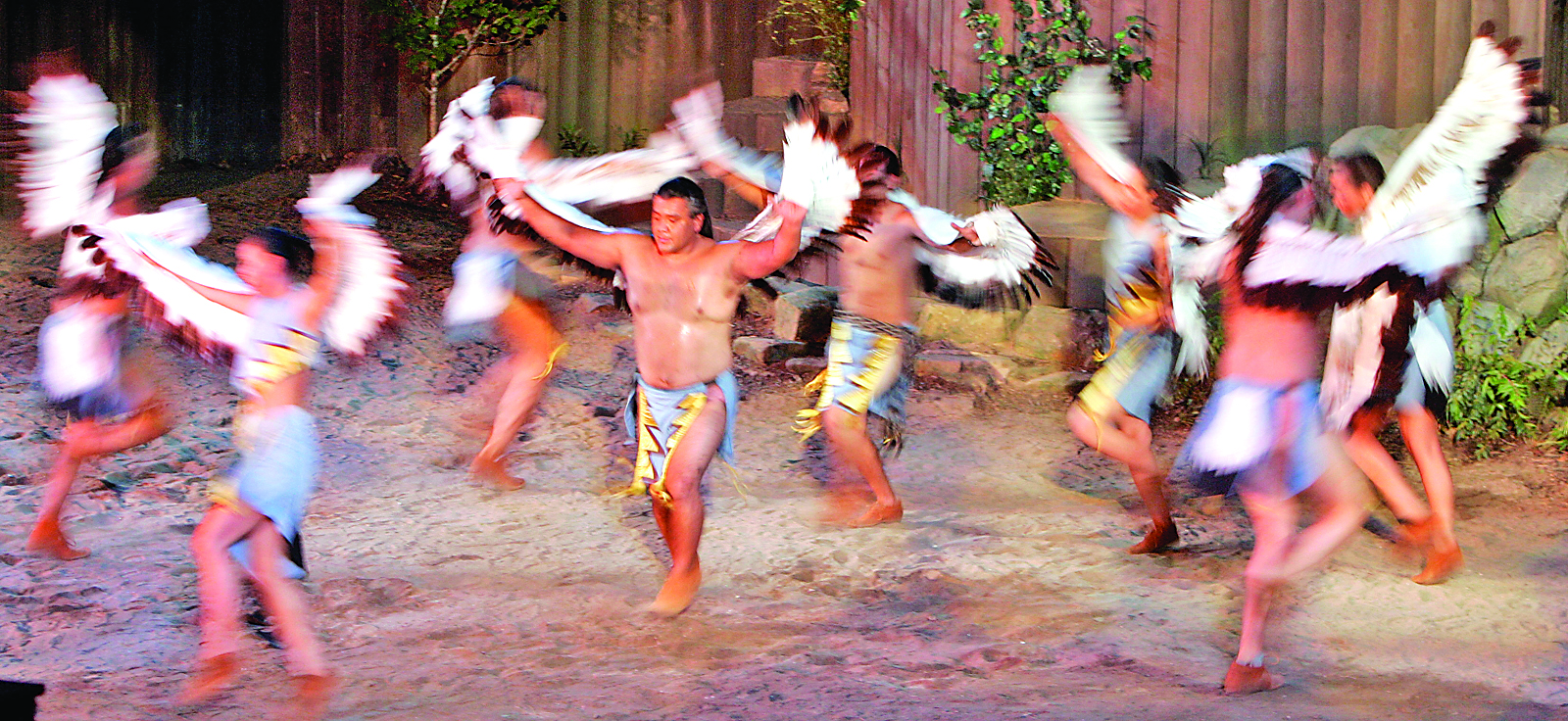 Actors perform the "Eagle Dance"during a performance of the outdoor drama "Unto These Hills" in Cherokee, N.C. Backed by $1.5 million in money generated by the tribal casino, James Bradley led a radical revision of "Unto These Hills." The result is a new, less plot-driven production that supporters say is truer to Cherokee history and traditions. in Cherokee, N.C. (AP Photo/Chuck Burton)
Actors perform the "Eagle Dance"during a performance of the outdoor drama "Unto These Hills" in Cherokee, N.C. Backed by $1.5 million in money generated by the tribal casino, James Bradley led a radical revision of "Unto These Hills." The result is a new, less plot-driven production that supporters say is truer to Cherokee history and traditions. in Cherokee, N.C. (AP Photo/Chuck Burton)Search all you want, but you won't find a founding date for the town of Cherokee, N.C.
American Indians have lived in the mountains of North Carolina since recorded history began.
"Our identification with the land is about 11,000 years," said Robert Jumper, manager of travel and tourism for the Eastern Band of the Cherokee Indians. In other words, "Cherokee people have always been here."
A "gateway" to the nearby Great Smoky Mountains National Park, Cherokee, N.C., lies along the Oconaluftee River, which is primarily used for fishing or wading, and in recent years, tubing.
In the last decade, the town has developed an island in the middle of the Oconaluftee River, building a resort with playgrounds and picnic areas. Flocks of Canada geese often visit the island, Jumper said.
Every Friday and Saturday night the town holds a free bonfire on the island where visitors can roast marshmallows and listen to the Cherokee people tell stories.
The Cherokee people have long been known as adapters, Jumper said.
The tribe has survived throughout history by adapting to the environment and cultures it came in contact with, including English settlers.
"When you get here, you see a lot of immigrant influence," he said. "You see a mix of modern culture and Cherokee tradition."
Another big attraction is Harrah's Cherokee Casino and Hotel, located on the Eastern Band of Cherokee Indian Reservation, which is known as the Qualla Boundary. The 21-story luxury hotel has fabulous views and offers more than 21,000 square feet of meeting space for conventions, conferences, seminars and weddings.
The recently renovated Museum of the Cherokee Indian is heralded as one of the premiere attractions in the Southeast, Jumper said. In the first week of October, the town holds the Cherokee Indian Fair, an event that at first glance may seem like a traditional county fair, but doubles as a five-day showcase of American Indian culture.
Visitors bring arts and cultural crafts, and locals demonstrate corn shucking and other tribal survival methods. In addition, historic American Indian dances are demonstrated.
The stories, the sights and the scenery together build a Cherokee history you can't find in books or anywhere else.
"The only way to truly have that experience is to be here," Jumper said.
AT GLANCE
-- Population: Approximately 8,000.
-- Best things to do: One must-see event is the Indian powwow, which occurs the last weekend of June. A multicultural festival of native peoples takes place at the end of each August. Harrah's Cherokee Casino and Hotel.
-- Biggest employers: Harrah's Cherokee Casino and Hotel employs about 3,000. The tribal government employs about 1,000.
-- Miles from downtown Chattanooga: 150.
-- Landmarks: The Oconaluftee Indian Village features tours, live re-enactments and craft demonstrations.
-- Best-kept secret: The annual show "Unto These Hills" retells the story of the Cherokees up to the Trail of Tears in 1838. It is the second-oldest historical outdoor drama in the United States.
-- Something you didn't know: There's a common perception that Native Americans wore big headdresses, lived in teepees and fought other tribes. In reality, the Cherokee Indians lived as woodland tribes with houses instead of teepees. They were not a warring people; they were farmers. Finally, they didn't have headdresses. "When people come here, they're not going to see a big, flashy Hollywood-style Indian," Jumper said. "They're going to see what Indians were and are in today's society."
